qbin_barplot() shows the median or mean for each quantile bin, thereby focusing on
the expected value per qbin().
For a conditional plot, see cond_barplot().
Arguments
- data
a
data.frameto be binned- x
charactervariable name used for the quantile binning- n
integernumber of quantile bins.- min_bin_size
integerminimum number of rows/data points that should be in a quantile bin. If NULL it is initiallysqrt(nrow(data))- overlap
logicalifTRUEthe quantile bins will overlap. Default value will beFALSE.- ncols
The number of column to be used in the layout.
- fill
The color to use for the bars.
- type
The type of statistic to use for the bars.
- ...
Additional arguments to pass to the plot functions
Value
A list of ggplot objects.
Details
The table_plot is a specific form of qbin_barplot
with ncols set to ncol(data).
See also
Other qbin plotting functions:
qbin_boxplot(),
qbin_heatmap(),
qbin_lineplot()
Examples
# \donttest{
data("diamonds", package="ggplot2")
table_plot(diamonds[c(1:4, 7)], "carat")
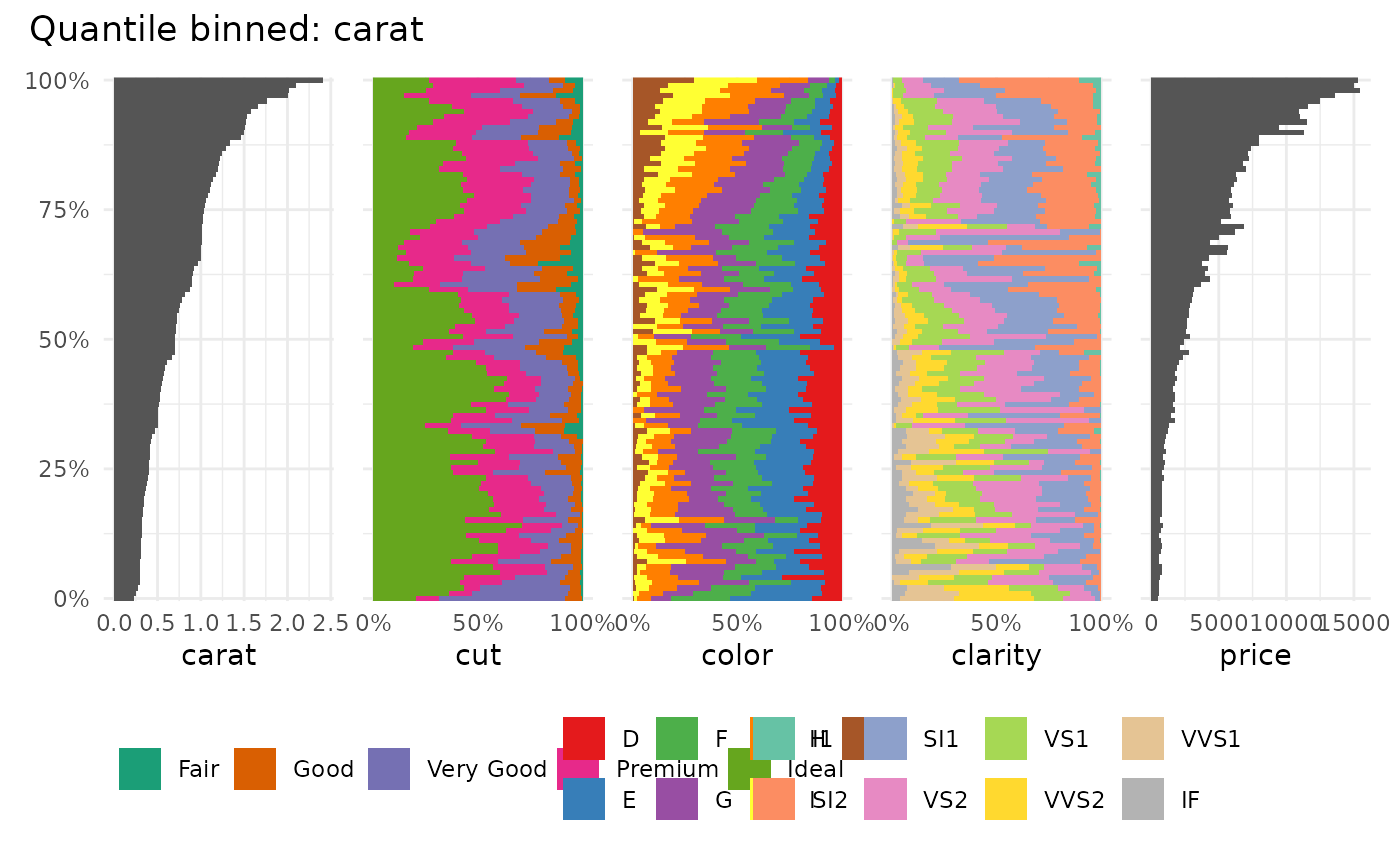 qbin_barplot(iris, "Sepal.Length", n = 12)
qbin_barplot(iris, "Sepal.Length", n = 12)
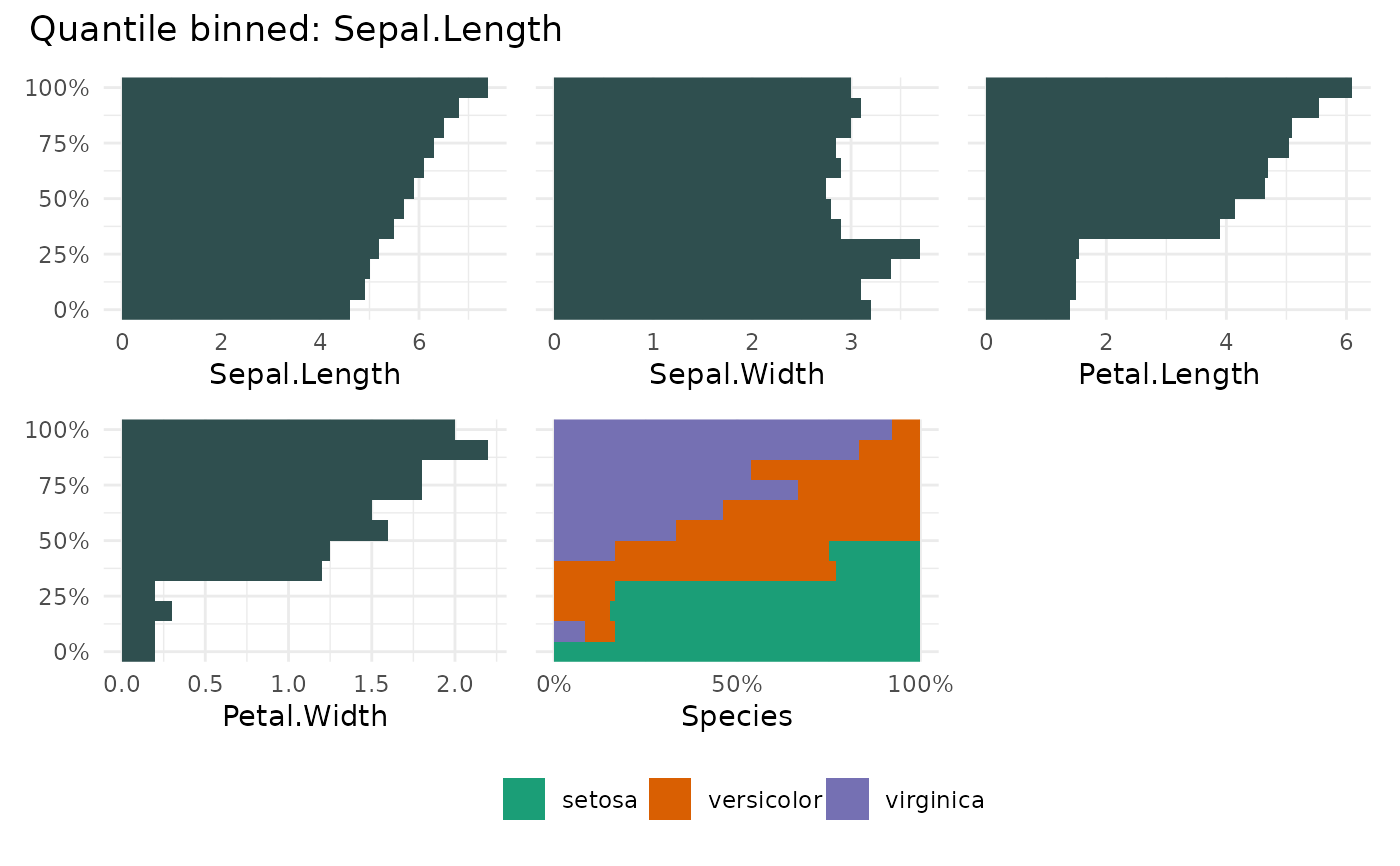 table_plot(iris, "Sepal.Length", n=12)
table_plot(iris, "Sepal.Length", n=12)
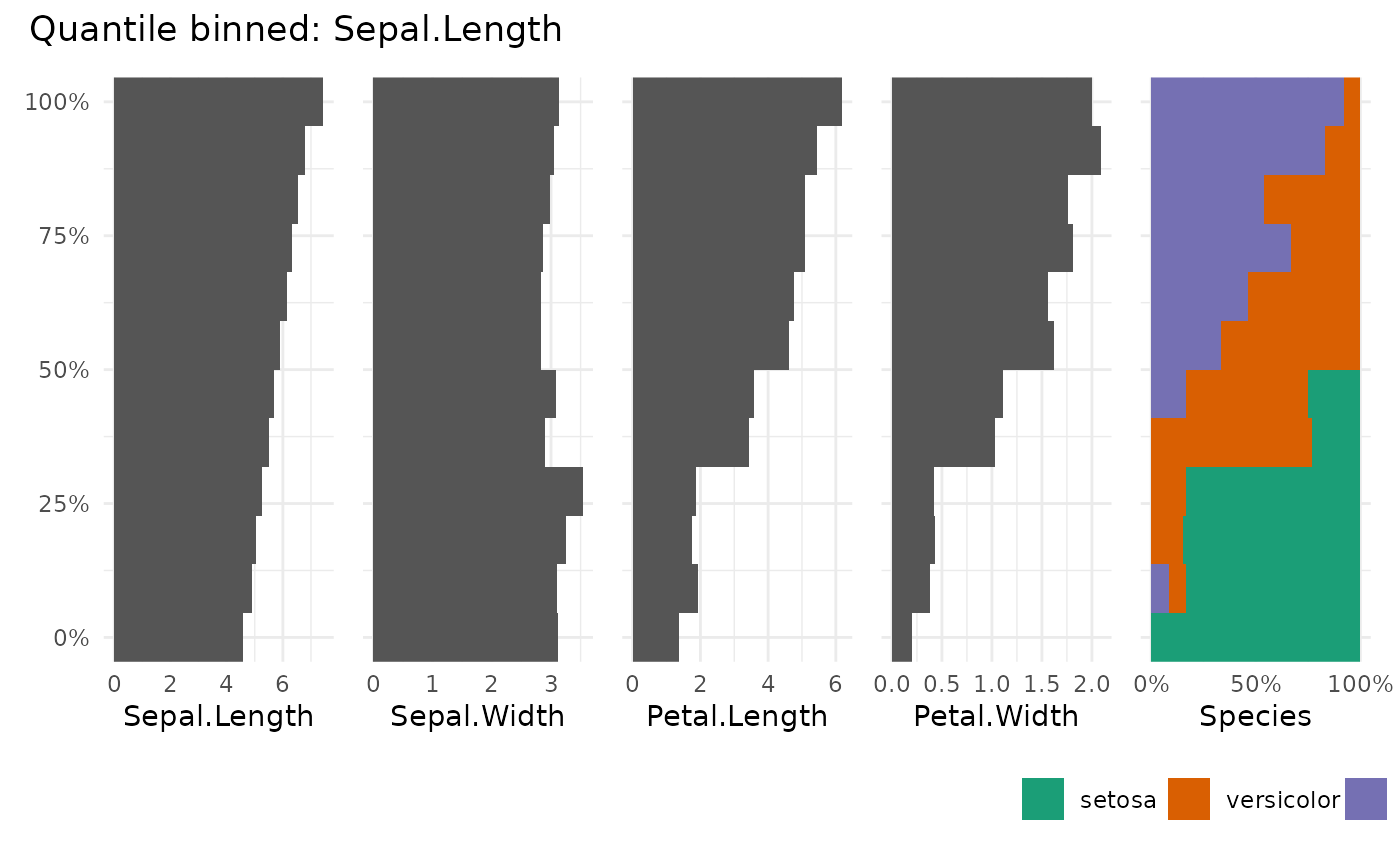 table_plot(
iris,
x = "Sepal.Length",
min_bin_size=20,
overlap=TRUE
)
table_plot(
iris,
x = "Sepal.Length",
min_bin_size=20,
overlap=TRUE
)
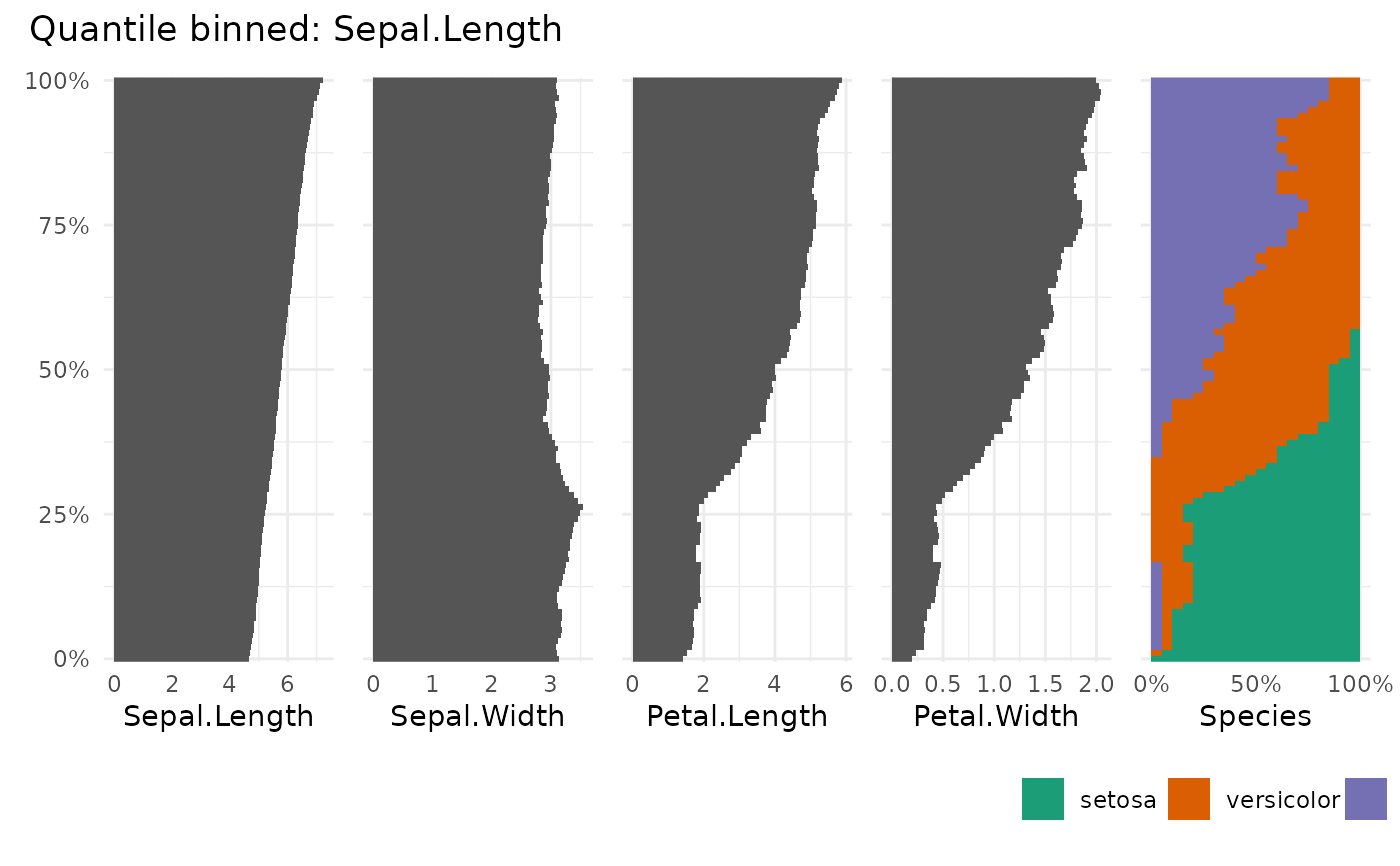 if (require(palmerpenguins)) {
table_plot(penguins[1:7], "body_mass_g", 19)
}
if (require(palmerpenguins)) {
table_plot(penguins[1:7], "body_mass_g", 19)
}
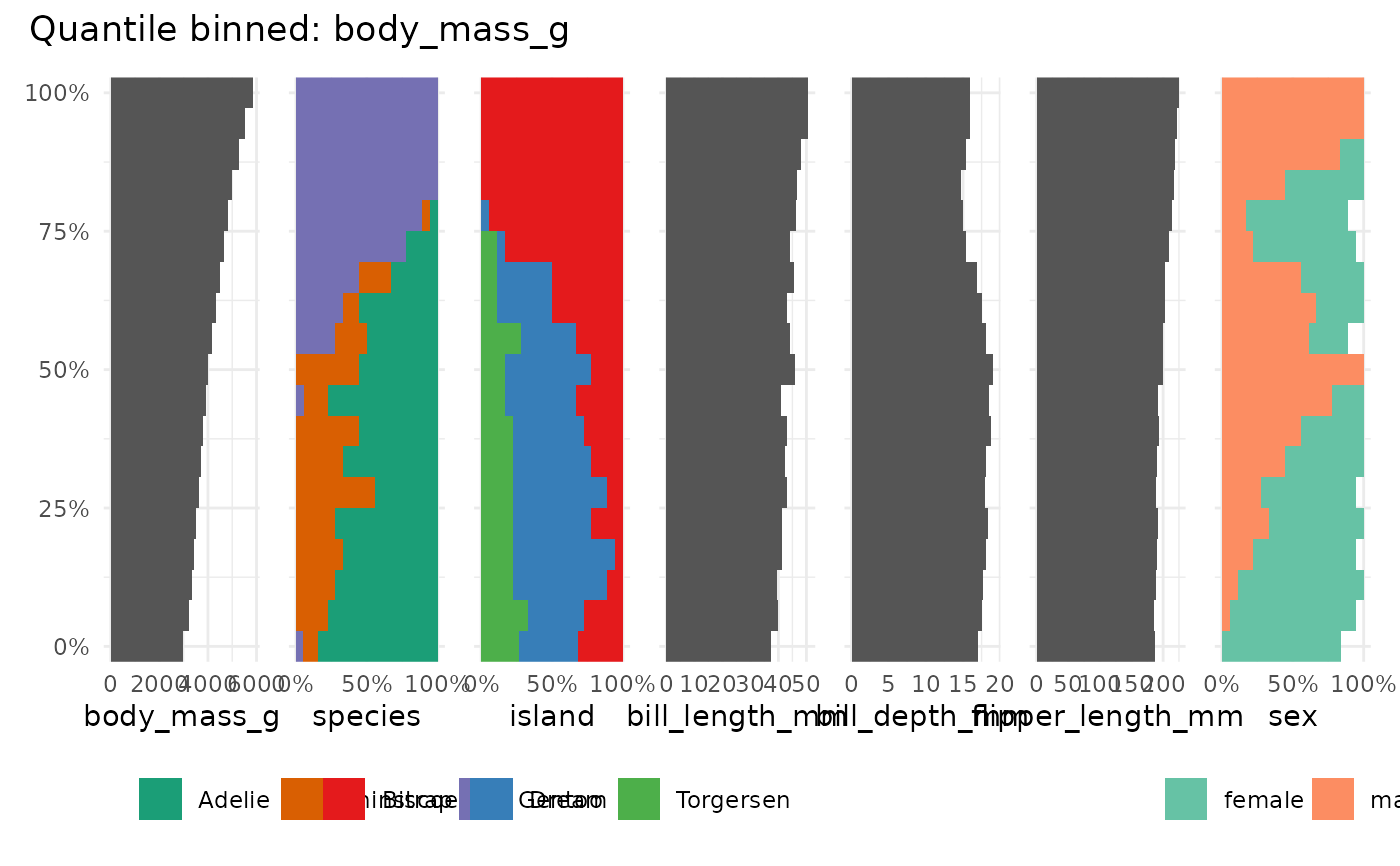 # }
# }